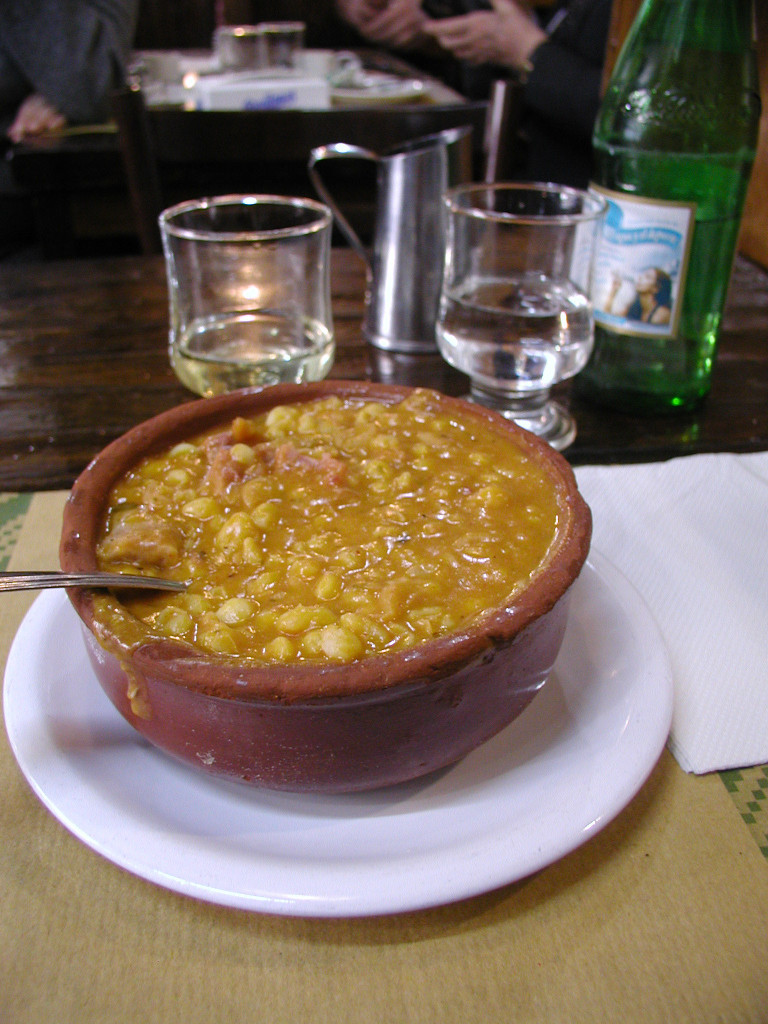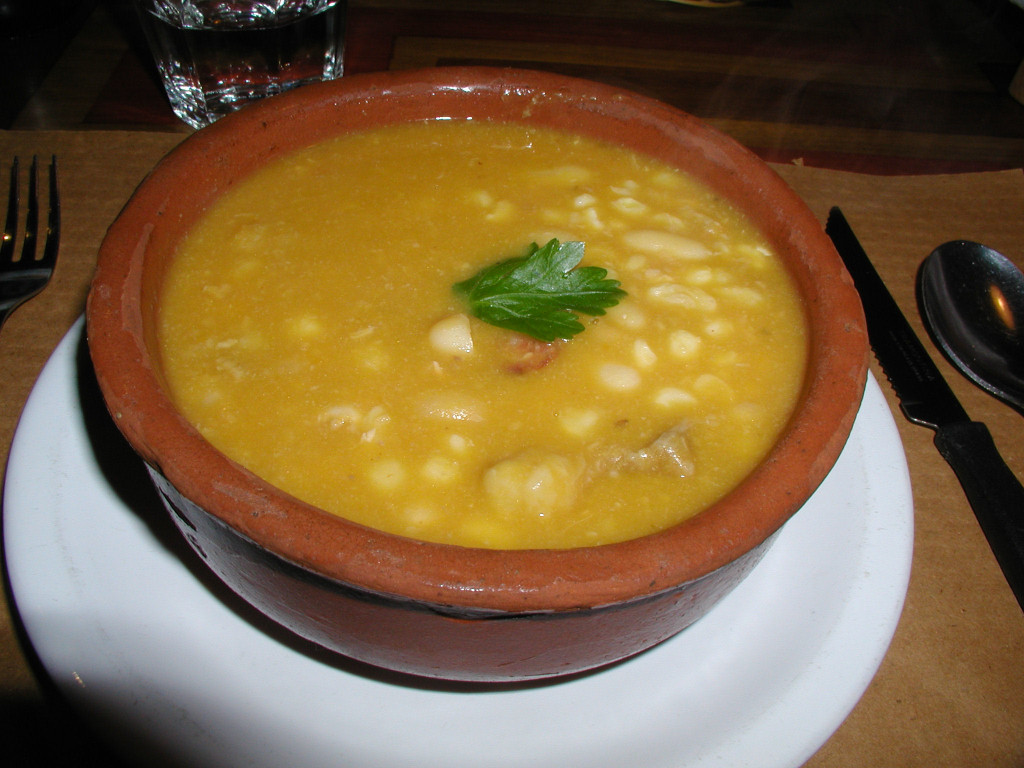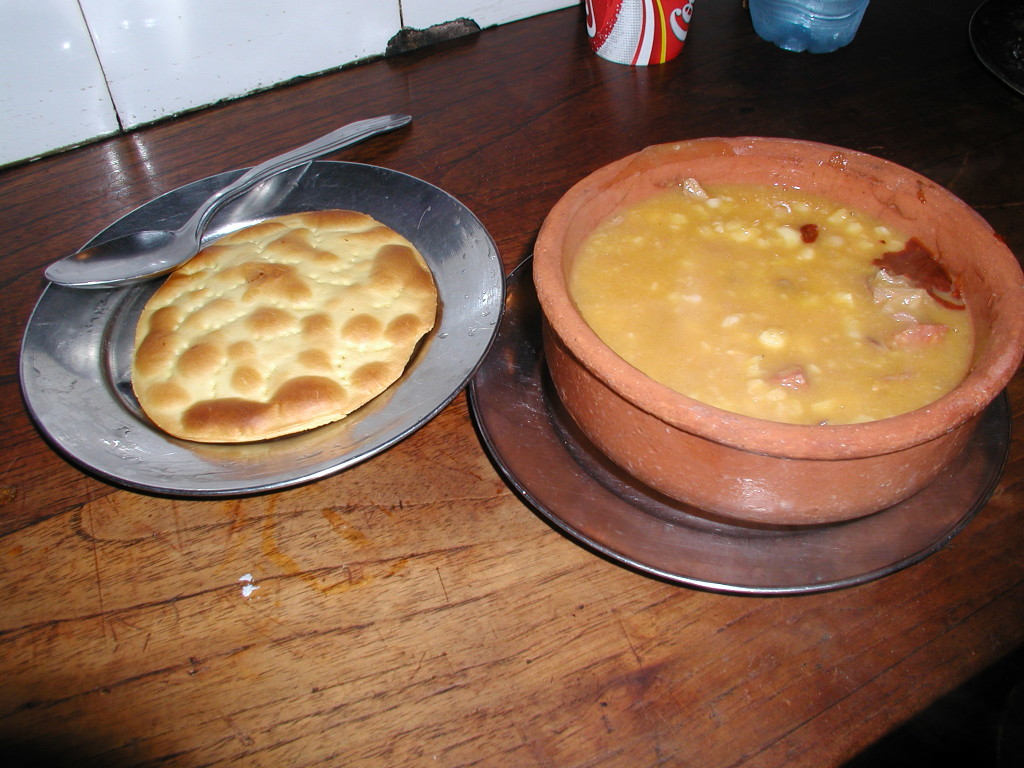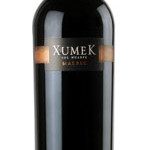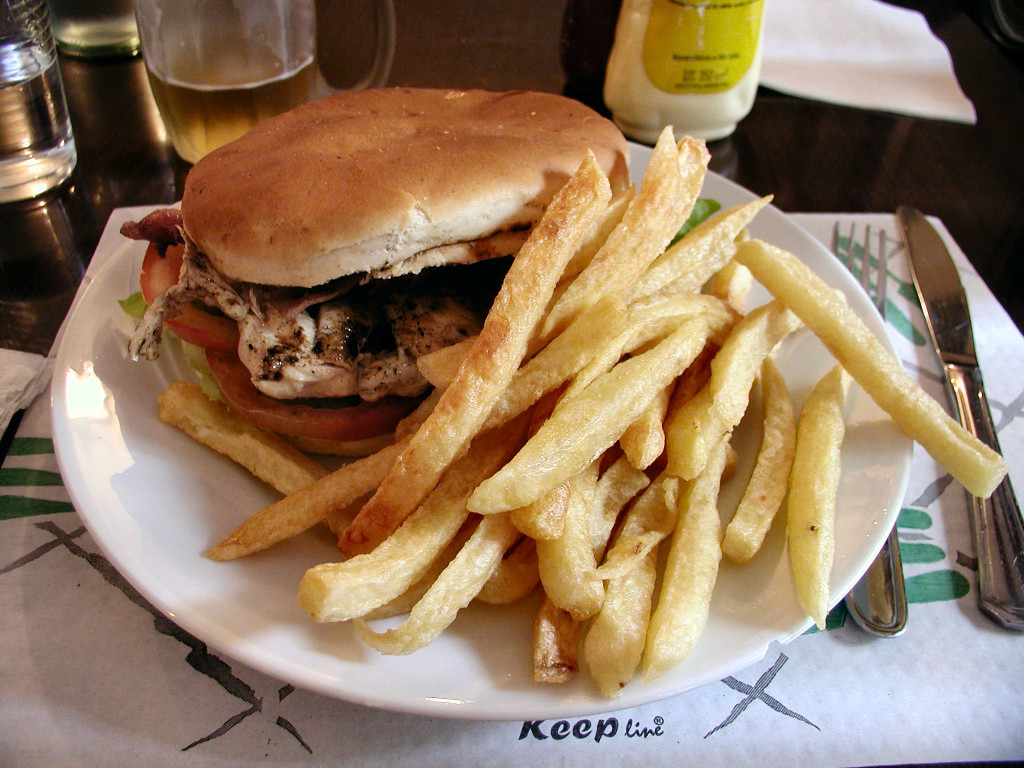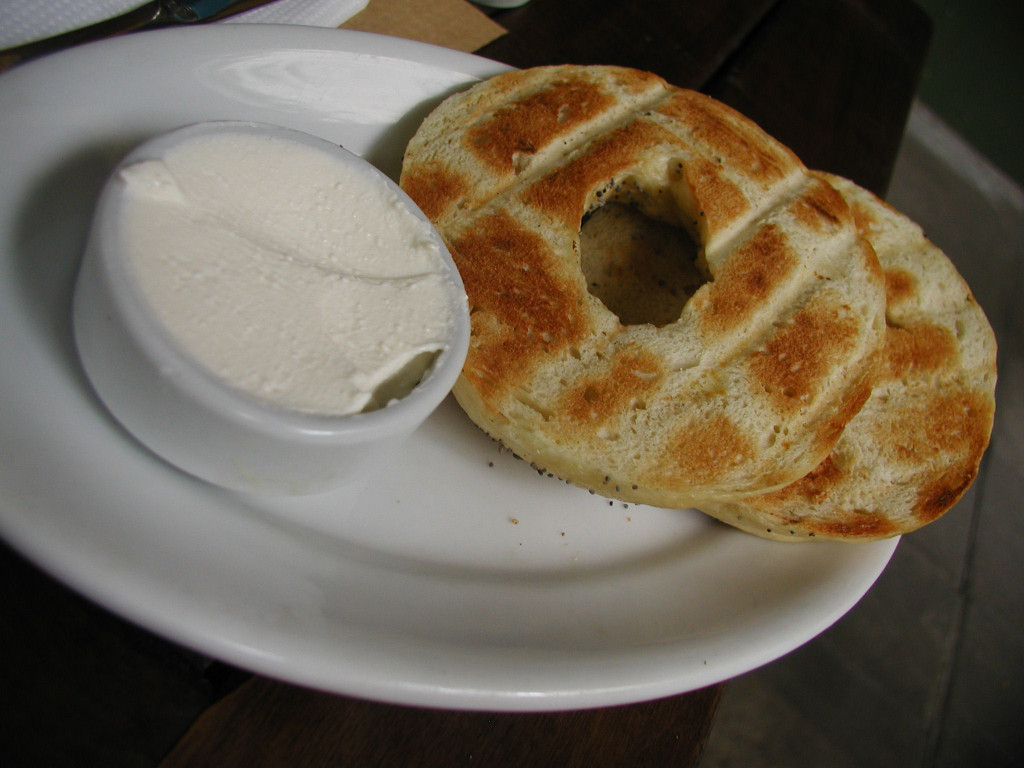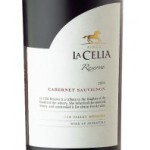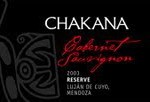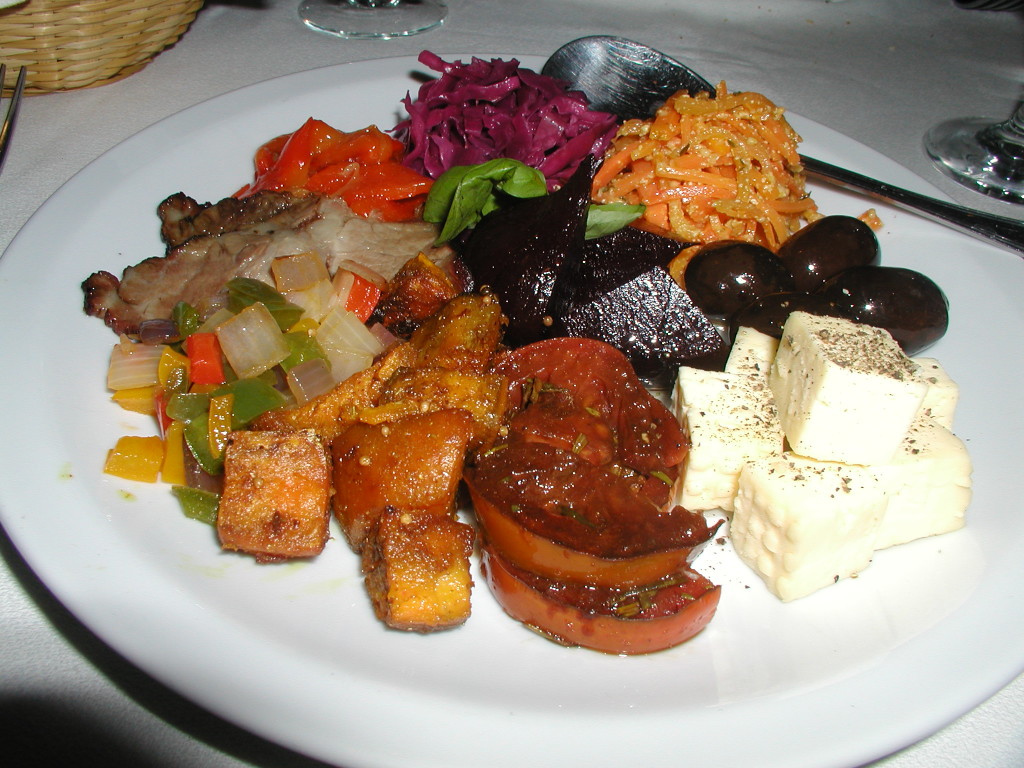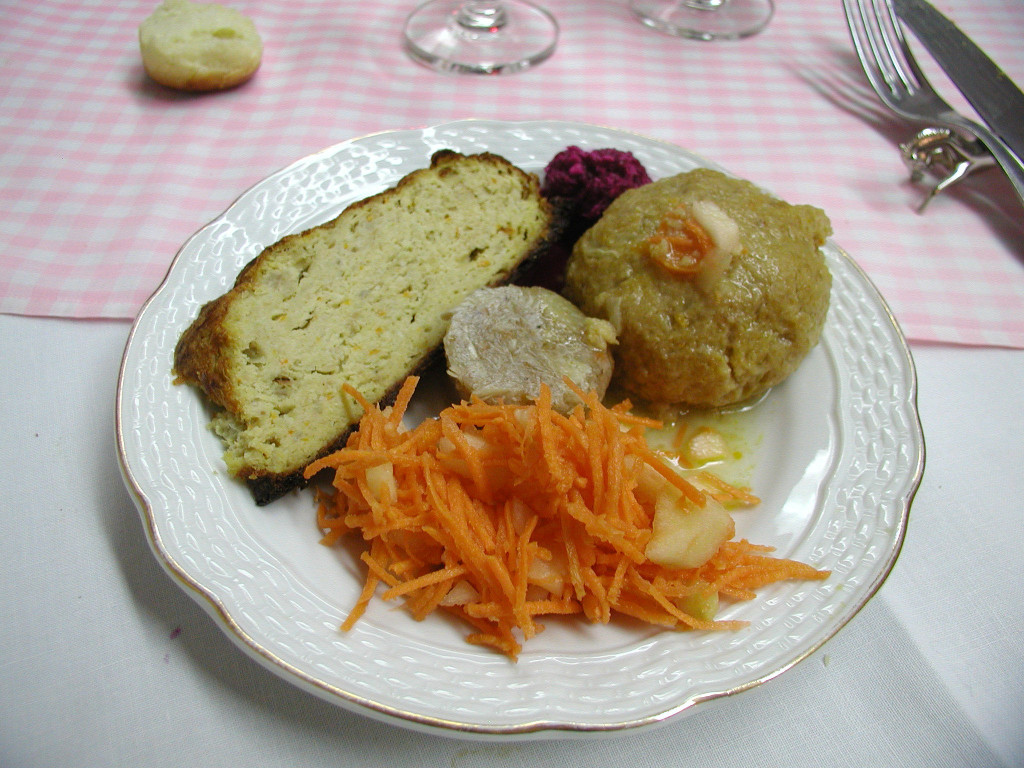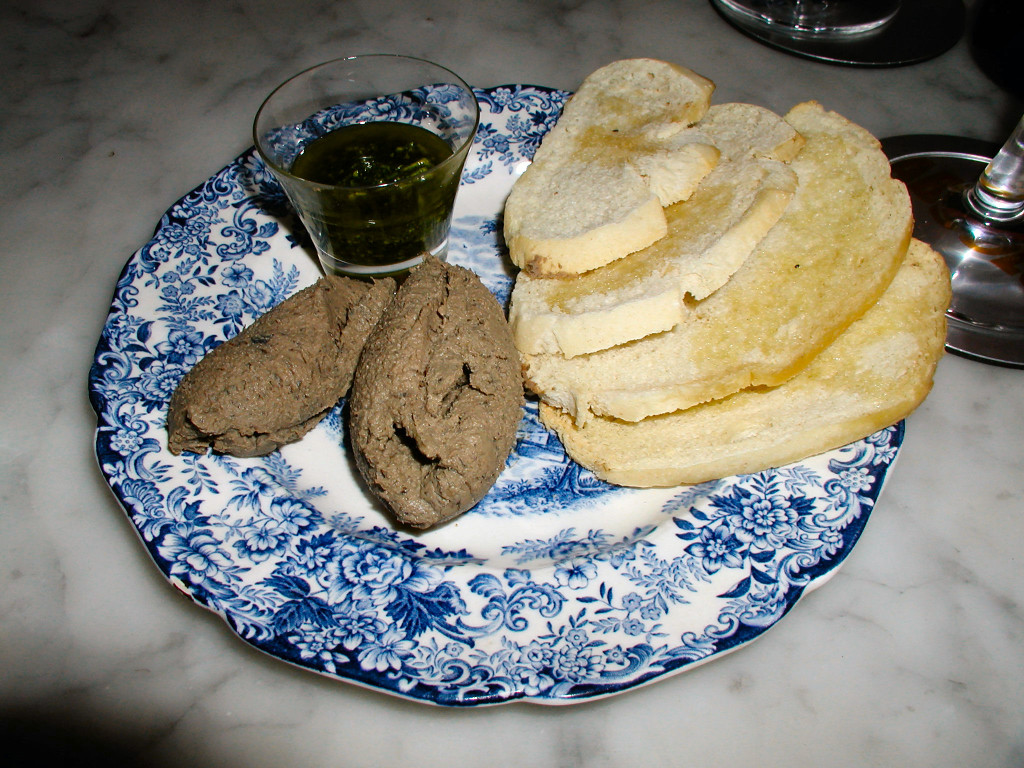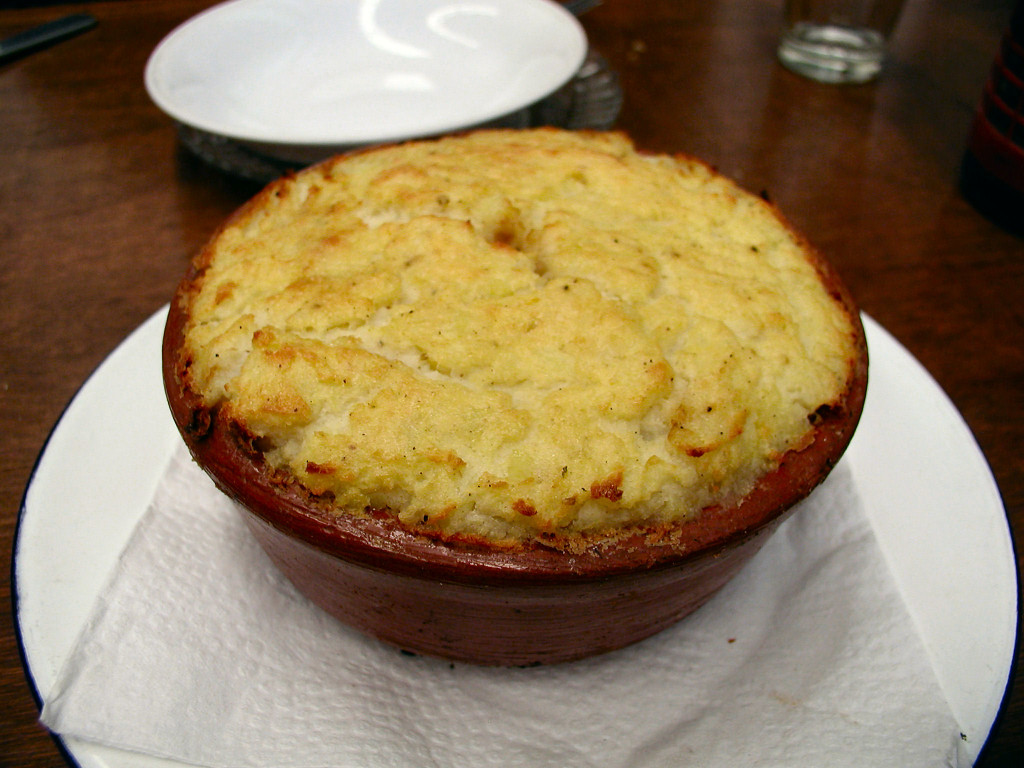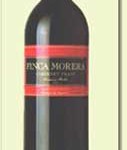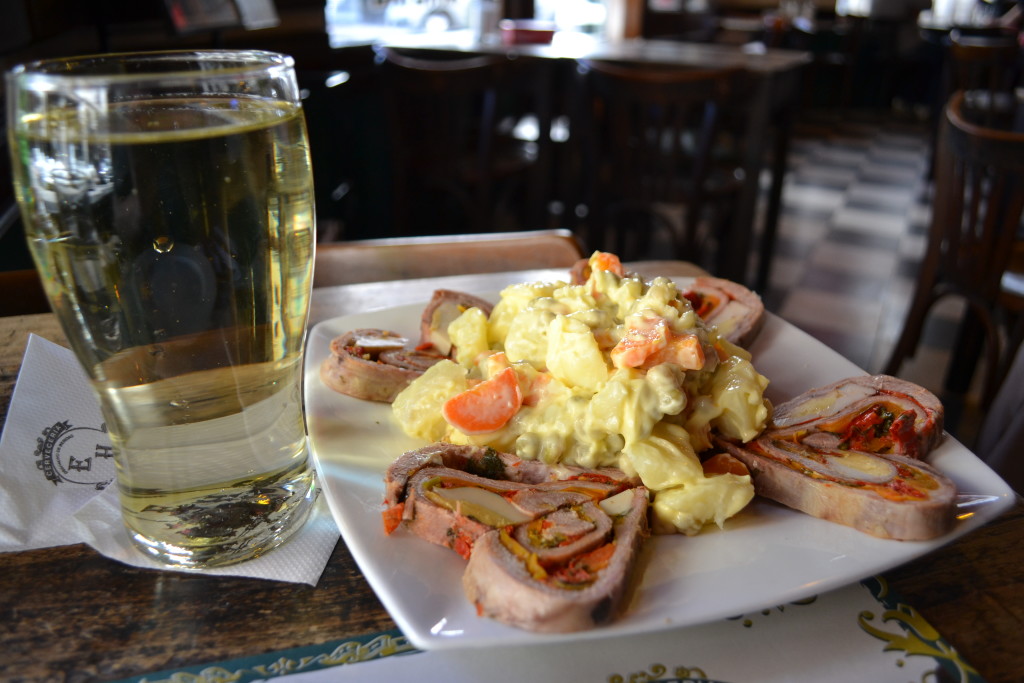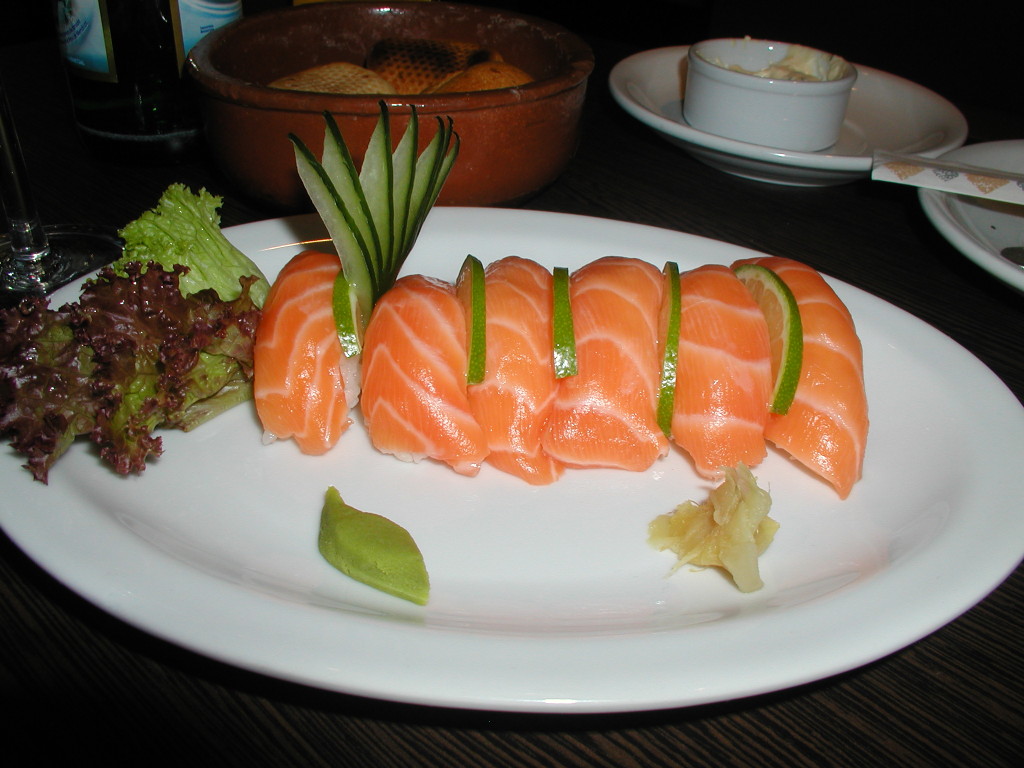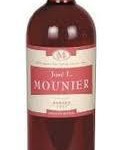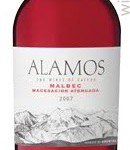Time Out
Buenos Aires for Visitors
Summer/Autumn 2007
Eighteen new restaurant reviews for the current issue.
The Centre – Argentinian (Traditional)
El Federal
San Martin 1015, y Marcel T de Alvear, Retiro (4313-1324). Subte C, San Martin/93, 152 bus. Open noon-3pm daily, 8pm-midnight Mon-Sat. Main Courses AR$20-30. Credit Amex, DC, MC, V.
El Federal made a name for itself and its chef-owner, Paula Comparatore, while located in a small venue in chic Palermo Viejo. For whatever reason, when it came time to expand, they moved into the heart of the financial district – which puts them more on the map at lunchtime where they’ve quickly become a favorite of the local business crowd. They serve up some truly creative and delicious adaptations of classic Argentine dishes. Paula’s focus is on the flavors of the south and west, from the pampas down to the glaciers, and her passion for food shows through in each and every beautifully designed plate. Lunch and dinner menus are nearly identical, though at lunch, everything is offered as a set price menu of either two or three courses, while at dinner, the same plates are offered a la carte. Portions are generous, the flavors are fresh and clean, and while there’s a tendency to sweetness in the sauces, there’s also no stinting on the spiciness when the dish calls for it. The wine list is well selected, reasonably extensive, and well priced, especially for the neighborhood. The overall feel of the room is a bit on the heavy side, with tables and chairs that seem to be made out of construction beams and leather and cowhide everywhere. One almost expects Hoss and Little Joe to come wandering in from the bunkhouse.
The Centre – Indian
Bengal
Arenales 837, entre Esmeralda y Suipacha, Retiro (4314 2926). Subte C, San Martin/17, 59, 111, 152 bus. Open noon-2am, daily Main courses AR$20-35. Credit AmEx, DC, MC, V
Despite the name, the focus at Bengal is on classic Italian pastas and risottos done up in fancy presentations. Sauces are elaborate, leaning towards the sweet side at times, and uniformly delicious. Almost as an afterthought there’s a small menu card stuck in the back of the main menu that offers half a dozen Indian specialties served up in hot stone bowls. These dishes are some of the more interesting ‘Hindu’ food offered in the city, definitely not the usual suspects, and there’s no stinting on the hot spices. The blend of Italian and Indian definitely makes for a fun evening if you have a group that likes to share. Don’t miss the grilled chipirone and shrimp appetizer from the Italian side, nor the chicken curry from the Indian side of the menu. The wine list is extensive; and expensive. If you don’t mind paying the high prices, go for something like Trapiche’s “Ciento-vente” blend.
Constitución – Argentinian (Traditional)
Lo Rafael
México 1501, y Sáenz Peña. Subte A/Independencía, 23, 39, 60, 168 bus. Open noon-3:30pm, from 7:30pm Tue-Sun. Main Courses AR$20-30. Credit Amex, DC, MC, V
‘International cuisine’ with a specialization in fish and pasta. Not what you’d expect on a quiet backstreet corner not far from the Constitutución train station. Perusing the menu is enough to make you think you just might have left Buenos Aires for another locale – perhaps some seaside venue in the south of France. Despite the stereotype that porteños don’t eat fish, Lo Rafael will be packed with locals, and most of them tucking into fillets from the sea rather than the few scattered dishes of carne. There’s a certain tendency on the part of the kitchen to lean towards cream and cheese sauces, which can seem a trifle heavy at times, but the flavor combinations are delicious, and they pull off the genre without leaving you feeling weighted down. An excellent selection of wines, including one of the better half-bottle selections in the city is on hand to compliment their food.
San Telmo – Argentinian (Traditional)
Mítico Sur
Pasaje San Lorenzo 389, y Defensa. Bus 10, 24, 28, 29, 39. Open 8am-1am Tue-Sun. Main Courses AR$5-$30. Credit Amex, DC, MC, V
In the most simple of terms, Mítico Sur is a Patagonian tapas bar. Located on a small alleyway near the start of San Telmo, you enter in and seat yourself at a barrel with a piece of wood sitting atop it. There are a few downstairs in the bar, and more, as well as regular tables, above in a loft. You can choose from a wide array of preserved, smoked, and fresh tapas that cover the world of vegetables, cheeses, meats, and seafood. A few of each, or focus on one particular area – it’s really up to you. There are pre-planned combinations in portions that will easily feed from two to four people per platter. Or, pick individual selections and create your own tabla. The food is backed up by an excellent Patagonian wine list, with a wide range of selections and prices. The staff are friendly, and knowledgeable about the food, and eager to make recommendations, a rarity in this town. The grand-daddy combo is the Quimey, and gives you a little something for everyone. This is a great place to stop off for before dinner snacking, tapas style, or just load up on one delicious bite after another.
Recoleta & Barrio Norte – Argentinian (Traditional)
El Yugo
Ayacucho 1629, entre Las Heras y Vicente Lopez, Recoleta (4806 2009). 10, 37, 59, 60, 101, 110 bus. Open noon-3:30pm, from 7:30pm Mon-Sat Main courses AR$10-20. Credit MC, V
Walking into El Yugo is a little like walking onto the set of Bonanza, with perhaps just a few too many wood beams, buggy springs, hitching posts, and waiters in gaucho garb scattered about. The only colorful touch comes from the draped flags of virtually every Latin American country hanging from the ceiling, and the excellent all you can eat salad bar. Delicious, smoking steaks are cooked just the way you want them, and accompanied by some of the best fries in the city (especially the papas pays, the thin fries). On the appetizer side there’s a loose consensus out there that no one serves a better plate of grilled mollejas, sweetbreads. The wine list is decently selected and well priced.
Recoleta & Barrio Norte – Argentinian (Modern)
Lo de Jose Slow Food
Arenales 2659, entre Ecuador y Anchorena, Recoleta (4823 8476). Subte C, Pueyrredón/39, 64, 95, 101 bus. Open noon-3:30pm, from 7:30pm Mon-Sat Main Courses AR$15-20. Credit Amex, MC, V
If it wasn’t for getting a bill at the end of the meal, and having a friendly waiter taking care of your needs, this would be like José had invited you over for dinner. A restaurant with as warm an ambiance as a fantasy household, and food that wanders out of the kitchen whenever it gets prepared – and that happens only when you order it, al momento, no pre-made items here – this is a place to just relax and soak in a tranquil moment. Specializing in creatively prepared pastas and crepes, leaning towards the lighter side of the scale, it’s hard to remember the primal carnivorous fest going on throughout the rest of the area. Though there’s a wide breadth to the menu, the wine list is a trifle compact, clearly not as much thought went into it as the food. Service is correct, a trifle slow – but then, who’d want to eat at Lo de José Fast Food?
788 Food Bar
Arenales 1877, entre Riobamba y Callao, Recoleta (4814 4788). Subte D, Callao/10, 39, 60, 101 bus. Open noon-4pm, 8pm-1am, Mon-Sat. Main courses AR$20-30. Credit AmEx, MC, V
Some of the most creative food being served up in the city, with true ‘fusion’ credentials. The beautifully appointed room, gracious service – with elegant touches like a warmed, covered breadbox on your table – make dining here a pleasure. The menu changes regularly, but don’t miss the ‘don’t miss dishes’ when they have them – the brown sugar braised pork, and the tomato-cardamom flan. The atmosphere is fun, with a quiet cocktail lounge serving up quality drinks adjoining the dining room, and an upstairs late night lounge that has a truly energetic vibe for when you’ve finished your dessert. Though not specifically a gay ‘scene’, there’s definitely a gay community presence in both the lounge and dining room. The wine list needs to be expanded.
Recoleta & Barrio Norte – French
La Olla de Felix
Juncal 1693, entre Rodriguez Peña y Montevideo, Recoleta (4811 2873 ). Subte C, San Martin/17, 59, 111, 152 bus. Open noon-3:30pm, from 7:30pm Tue-Sat Main courses AR$15-25. No credit cards
It’s no small thing for the star chef of the Ritz-Carlton, Paris, to pack up and move to Buenos Aires and open up a tiny 20-seat bistro. Of course, Felix really just wanted to retire here and cook what he felt like – no room service to worry about. Each day he and his staff prepare and serve delicious, perfectly prepared French food – one salad and four main courses offered (vegetable, fish, chicken, and red meat) are offered, and the menu changes daily. No appetizers in sight. One or two desserts. No wine list, just whatever he happens to have picked up that week, or day, and priced completely reasonably. Though by no means limited to, La Olla de Felix is very popular with the local gay boys. Don’t be surprised if Felix announces an early closing, sometimes he just feels like going dancing at a local club.
Rabelais
Libertad 1319, y Juncal, Recoleta. 17, 59, 67, 75, 102 bus. Open 12:30-4pm, 8pm-midnight Mon-Sat. Main Courses $25-35. Credit Amex, MC, V
Classic French brasserie, with a decor that seamlessly blends a bit of country French with the feel of some sort of sophisticated neighborhood hangout. You almost expect to see aging writers and artists stuck away in the corners sipping on absinthe. The menu, a huge leather-bound affair, houses a lengthy listing of classic dishes like a perfectly cooked coq au vin and one of the best French onion soups you’ll ever dip a spoon into. There’s no question that it’s excellent quality, though portion sizes tend to be a bit small, especially for the price, but then, this is the heart of Recoleta, and you’re likely to be surrounded by ladies who lunch with their lap dogs, and French expats, all (except the dogs) being greeted and kissed on both cheeks by the ever-present owner. The wine list is well put together, and includes some delightful surprises from smaller producers, as well as some unusual wines by the glass.
Recoleta & Barrio Norte – Italian
Primafila (this review was cut from the final print for space reasons)
Pueyrredón 2501, 2nd level of the Buenos Aires Design Center, Recoleta (4804 0055). Subte D, Pueyrredón/10, 59, 60, 95, 110, 118 bus. Open noon-11pm Main Courses AR$20-35. Credit Amex, V, MC, DC
People watching, celebrity spotting, catching some rays, shopping, and good food and wine all rolled into one. When you’re at the mall, and despite it’s trendy, high-end, designer home furnishings, the Buenos Aires Design Center is a mall, sometimes you need to stop and peruse your purchases over pristinely fresh, creative salads, pastas, mini-pizzas, and some of the most interesting modern Italian food in the city. In nice weather you can sit out on the terrace and enjoy the day – just try not to get whiplash watching the amorous couples making out on the lounging couches, or glitzy actresses out with their latest boy-toys. Instead, or in-between, tuck into the expensive but well worth it fare, and wide array of wines, including an excellent selection by the glass.
Palermo & Palermo Viejo – Peruvian
Moche
Nicaragua 5901, y Ravignani (4772-4160). Subte D, Carranza/21, 108, 111 bus. Open 8pm-1am Tue-Sat, noon-3pm Sat-Sun. Main Courses AR$20-30. Credit Amex, MC, V.
Quite simply the most creative Peruvian restaurant in the city while still maintaining authentic grounding in flavors and technique. The dining room is small, seating a mere 24 people, with an adjacent bar for another half dozen, yet with high ceilings and simple but tasteful decor, gives the illusion of airy spaciousness. Service is attentive and friendly, and special requests are met with a happy ‘I’ll see what we can do for you’. The menu is fairly extensive, and covers classic dishes from the north to south of Peru. Portions are reasonable, especially given the high quality of the cooking. The flavors are bright and fresh, the picante spices, sadly, are toned down for local palates, but can be set right with a request to the kitchen. The wine list is short but well selected, with a nice focus on whites, roses, and lighter reds that go with the food. They make some wicked classics, like one of the few real Pisco sours in town, and a great non-alcoholic chicha morada.
Palermo & Palermo Viejo – Eclectic
Zelanda Hand Restó (this review was cut from the final print for space reasons)
Humboldt 1897, y Costa Rica, Palermo viejo (4779 9113). Subte D, Palermo/21, 108, 11, 161 bus. Open 9am-1am. Main Courses AR$15-25. Credit local debit cards only.
One would be hard-pressed to say what “modern New Zealand” cuisine is, but suffice it to say that it’s likely to involve a fair amount of lamb, fish, and Asian influences. Zelanda holds true to that promise, and the chef earned his chops in kitchens throughout New Zealand and Australia. Dead-on spicy Thai curries, Japanese tempuras, and Vietnamese springrolls, each with their own twists, grace most of the menu, but some of the best are the more creative fusion dishes where he brings together amazingly disparate ingredients into delicious harmony. The wine list is virtually non-existent, barely an after-thought, a true shame given the quality of the food. Service is friendly and efficient, and the ambiance is an interesting mix of casual and elegant. The room is lacking a trifle in soft surfaces, so despite its small size, expect the volume level to be loud and energetic… but then, this is in the heart of Palermo’s restaurant row.
Las Cañitas – German
Bodensee
Ortega y Gasset 1876, y Baez (4776-9064). Subte D/Carranza, 15, 29, 59, 60, 64, 118 bus. Open noon-3pm Mon-Sun, 8pm-1am Tue-Sun. Main Courses $15-20. Credit Amex, MC, V
All that’s missing is the leiderhosen and the oompah-pah band and you could be in the heart of the Oktoberfest. You’ll forget about those missing things quickly as you tuck into mounds of sausages, cured meats, sauerkraut, rich veal goulash with spaetzle – pretty much anything that comes from the triangle of Austria, Hungary, and Germany. With the owner always on hand to make suggestions, and this is food he knows, having come from that area, you’re sure to have a great meal. Even better, virtually every dish is available in half portions… the idea being that it’s fairly heavy food and maybe you want to lighten things up a bit. Or maybe you just want to try two different dishes and worry about burning off the calories later. This is food to be washed down with pints of ale, and Bodensee has them iced and at the ready. Sure there’s a wine list, but Malbec and pickled cabbage have never been and never will be a stellar match. Every expense has been spared on the decor, but you’re not there to look at the scenery – or if you are, take a table out on the sidewalk.
Abasto & Caballito – Argentinian (Traditional)
Esquina Carlos Gardel
Carlos Gardel 3200, y Anchorena, Abasto (4867-6363). Subte B/Gardel, 26, 64, 68, 99, 118, 140 bus. Open Open from 8:30pm daily Main Courses $250 pesos and up. No credit cards.
Don’t let the price scare you off. It includes both a three course dinner and a nearly two hour tango show, and one of the best in town. While this beautifully appointed theater is more about the show than anything else, and you’ll see and hear a bit of every type of tango, milonga, and other Argentine music, it’s one of the few that doesn’t stint on the dinner side of things. Given that they’re serving up food for several hundred people at the same time, they do an amazing job. The menu is creative, international cuisine making use of local ingredients, and changes seasonally. Their game dishes are especially good. While basic house wine is included in the price, they also offer a decent selection of wines from their list, and the opportunity to bring your own at no charge. Given that you’re really there for the theater, try to grab a table at the front edge of the balcony, or from a good vantage point on the main floor. While dinner officially begins at 8:30, and the show at 10:30, folks have a tendency to wander in throughout that period – best to get their early, you’ll have better service, and you’ll be able to focus your attention on the show when it starts. The restaurant provides a shuttle bus for a nominal fee to and from your hotel, though experience says you’re best off just coming by cab.
Urondo Bar
Beauchef 1204, y Estrada, Parque Chacabuco (4922 9671). Subte E, Moreno/4, 7, 20, 25, 126, 135 bus. Open 8pm-1am Wed-Sat. Main Courses AR$15-25. No credit cards.
Named for Francisco ‘Paco’ Urondo, one of Argentina’s radical poets of the late 60’s and early 70’s, until he became one of the ‘disappeared’, this cozy corner spot is run by his grandson Javier and nephew Sebastian. The former mans the kitchen with a team of half a dozen, and turns out amazingly creative dishes that are a fusion of classic Argentine with intense Southeast Asian influences. Plate after plate delights the senses, as he uses spices both familiar, and not, in incredible harmony. Just to get an inkling, start with the copetín, a mixed platter of cheeses, meats, and vegetables, each prepared in a way you’d never expect. When they have it, the asparagus tart can’t be beat, and the osso buco risotto with gremolata is out of this world. Meanwhile, Sebastian handles the front of house, and in particular one of the best thought out wine lists in the city – not extensive, but he selects the wines to go with the food – look for unusual and dead-on selections like Bodega Pulenta “La Flor” Sauvignon blanc or Sur de Los Andes’ Malbec Reserva. The menu changes regularly to reflect what’s in season, available, and fresh that week. On a regular basis, Urondo also hosts Tuesday night set-price wine dinners that are not to be missed bargains.
Abasto & Caballito – Italian
702 de Gallo deli Restó
Gallo 702, y Lavalle, Abasto, (4861-0472). Subte B/Gardel, 26, 64, 68, 99, 118, 140 bus. Open noon-midnight Mon-Sat. Main Courses $15-25. Credit Amex, V
Risotto’s not an easy dish to make right. First you have to have the right rice, you can’t just use any old type. Then you have to stand over it and cook it slowly, bit by bit. Most restaurants don’t offer up much more than a pot of rice with some stuff mounded on top. 702 de Gallo gets it right, each and every time, with creamy, chewy, perfectly cooked risottos. Likewise, their pastas are al dente, not the local standard of limp noodles. Add in delicious pizzas (and a Thursday special of pizza libre), great salads, creative presentation, jazz music, and you’ll find yourself wondering how you could be on a back street behind the Abasto shopping center. Someone’s got it figured out though, and 702 is nearly always busy, lunch and dinner. There’s a well selected wine list – including a wide range of wines by the quartino – an Italian tradition of a quarter-liter flask rather than by the glass. Service is friendly and efficient, the brightly colored decor fits the mood, and you’ll find yourself going back time and again.
Abasto & Caballito – Peruvian
Sabor Norteño
La Rioja 187, Abasto, (4931-8300). Subte B/Miserere, Any bus to Estacion Once. Open noon-4pm, from 7:30pm daily Main Courses $10-20. No credit cards.
In the area surrounding the Abasto shopping mall there are literally dozens of hole-in-the-wall Peruvian restaurants. For the most part, they look very much alike, their menus appear much the same, and for the uninitiated it can be hard to decide which spot to pop into. After much sampling, it’s pretty clear that the best of the bunch is Sabor Norteño. The dishes are as traditional as they can be, the portions are generous, the flavors fresh and intense, they’re not afraid to use spices, and the staff know their stuff and are happy to make recommendations. While their specialty is the seafood of the north coast of Peru, and they make a great ceviche mixto as well as some delicious seafood stews, they also offer up one of the best pollo a la brasas in the city – golden roasted chicken on a spit with perfect fries. Don’t miss classic appetizers like anticuchos, tamales, ocopa or papas a la huancaina, some of the best versions around. Weekend afternoons they have live music which is a big draw for the local Peruvian community, so get there early if you want to score a table.
Almagro, Once & Villa Crespo – Pizza
Tuñin
Rivadavia 3902, y Castro Barros, Almagro, (4981-5555). Subte A/Castro Barros, 86, 88, 105, 146 bus. Open from 9am daily Main Courses $10-20. Credit Amex, MC, V
At first glance, and probably even second, this is just a neighborhood hangout. Most folks who don’t know about it don’t give it a moment’s thought, more likely heading for the katty-corner locale of Las Violettas, one of the city’s more famous cafes. Save that for coffee and dessert. Instead, sit yourself down, outside if available, at Tuñin and head straight for the listing of pizzas on the menu. Easily one of the best spots for pizza in the city, being out of the way, it’s more of a local’s in-the-know kind of spot. They offer up a relatively thin crust style, but it’s one of the richest, most buttery crusts you’ll find on a pie in the city. Top that off with delicious homemade sauces, and a cornucopia of toppings, and you’d already think you had it made. But, there’s more, Tuñin gives the added plus of offering virtually all their combinations by the slice, which means you can mix and match to your heart’s content. Besides, how can you knock a place that brings you a platter of potato chips and peanuts, free, with every beer?
Villa Devoto – Pizza
DVT Devoto Bar
Nueva York 4120, y Mercedes (4501-4224). 21, 105, 107, 114 bus. Open noon-3:30pm, from 7:30pm Tue-Sat Main Courses $10-20. No credit cards
This is easily the furthest afield restaurant we’ve picked, but for those who like to explore off the beaten path, the Villa Devoto neighborhood is one of the nicest zones to head off to. And you’d be hard-pressed to find a prettier little plaza than Plaza Arenales, which is, for the food-minded traveler, surrounded by a delightful restaurant row. While there are many places to choose from, DVT stands out for one particular reason, their pizzas. Sure, they offer the whole range of local pastas and minutas, but their pizza alone is worth the trip. Served up on a wooden slab, with a thick crust reminiscent of a large, buttery, crusty, French baguette, their toppings are creative, deliciously seasoned – try the Tisano, a mix of bacon, sun-dried tomatoes, fresh mushrooms, and olives. This is one of the few spots in town for a truly non-traditional style pie. The wine list is limited, but they have a nice selection of beers, and an excellent bar that whips up both alcohol and non specialty drinks that are perfect for sitting in the sun and watching the action along the street and in the plaza. Weekend afternoons are particularly enchanting, it’s family time, and you get a real experience of the local lifestyle – and you can pretty much bet you’ll be the only tourist on the block.
In mid-2006, I started writing for Time Out Buenos Aires. With changes in their way of conducting business, I decided to part company with them after my last article and set of reviews in mid-2009.





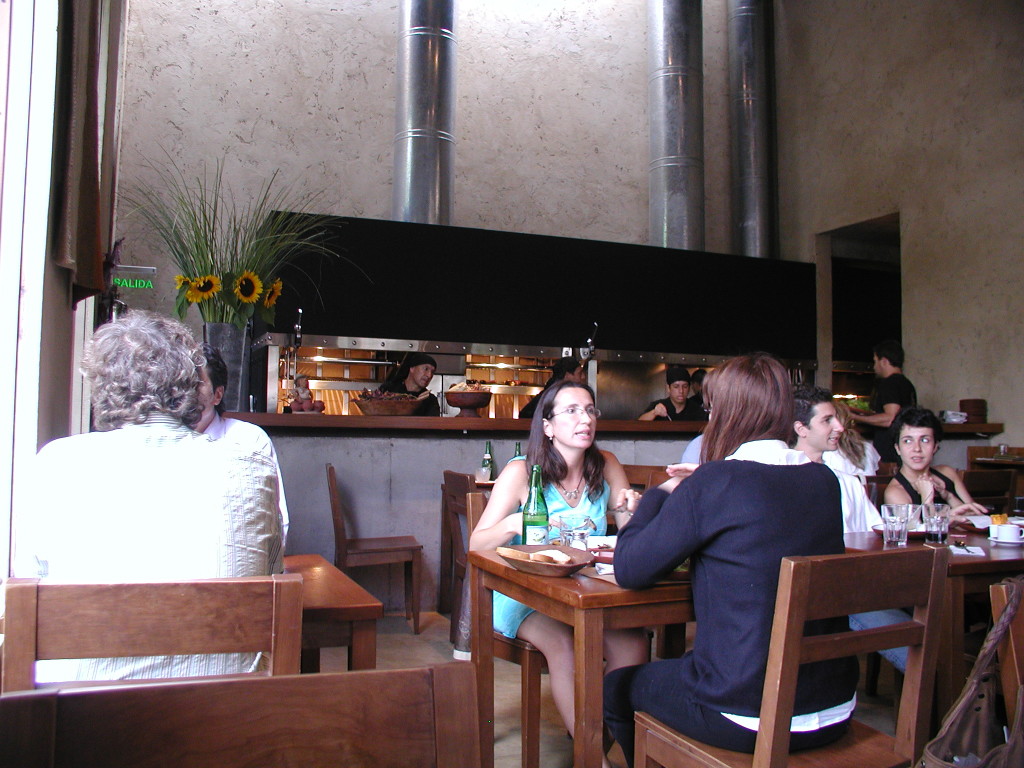
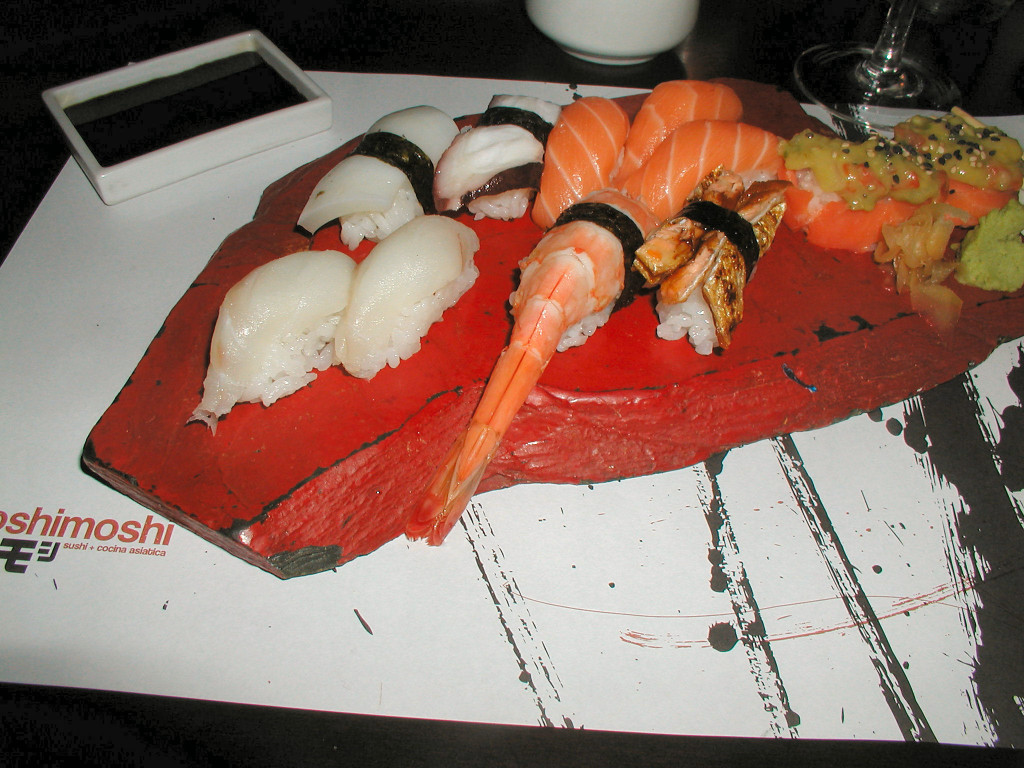
 On the wine front, one of the most common things I get asked, is how to learn the differences between different grapes. Beyond the old adage of just try, try, try, until you get it, which can cost a fortune, is the opportunity to find someone producing wines that are designed with just this in mind. Well known producer Bodegas Esmeralda produces a line of wines called Rodas Colección 12 – a dozen different individual varietals, white, pink, and red, made without oak aging, so they emphasize the pure flavors of the individual grapes. Best of the lot, their Petite Verdot, but they’re all a great way to educate your palate.
On the wine front, one of the most common things I get asked, is how to learn the differences between different grapes. Beyond the old adage of just try, try, try, until you get it, which can cost a fortune, is the opportunity to find someone producing wines that are designed with just this in mind. Well known producer Bodegas Esmeralda produces a line of wines called Rodas Colección 12 – a dozen different individual varietals, white, pink, and red, made without oak aging, so they emphasize the pure flavors of the individual grapes. Best of the lot, their Petite Verdot, but they’re all a great way to educate your palate.